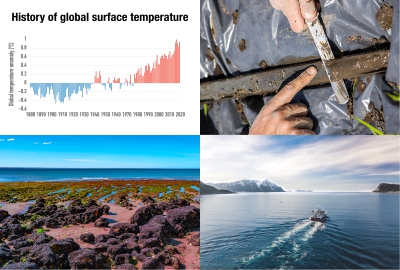Paleoceanography deals with the physical, chemical, and biological evolution of the oceans throughout geologic history. Paleoclimatology examines the feedbacks between different planetary spheres (geosphere, atmosphere, biosphere, cryosphere, hydrosphere) and their influence on past climates. Understanding how terrestrial and oceanic realms operated in the past allows us to predict how Earth will respond to future climatic changes. Questions our faculty tackle include:
- What do fossil plankton tell us about past ocean conditions?
- How much carbon is stored in wetlands and does the rate of carbon storage change through time?
- How can we use isotopes to track major events in Earth’s climate and biosphere?
- What do coralline algae tell us about past sea ice cover?
- How do early diagenetic reactions affect bioavailability of trace elements needed for biological processes?
| Faculty | Areas of Interest |
|---|---|
| Bridget Bergquist | metal geochemistry |
| Jörg Bollmann | paleoceanography, geobiology, paleoecology |
| Daniel Gregory | hydrothermal ore systems |
| Sarah Finkelstein | climate science, paleoclimatology, paleoecology, micropaleontology, wetland biogeosciences |
| Jochen Halfar | paleoclimatology, geobiology |
| Martin Head | dinoflagellate cysts, marine palynology, late Cenozoic |
| Ulrich Wortmann | marine geology, paleoceanography, carbon and sulfur cycling, geomicrobiology |


